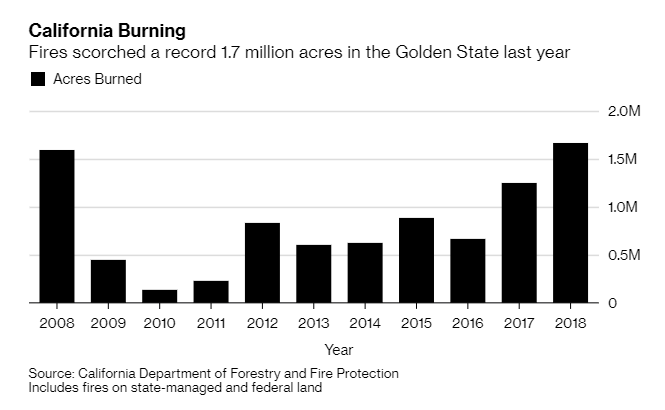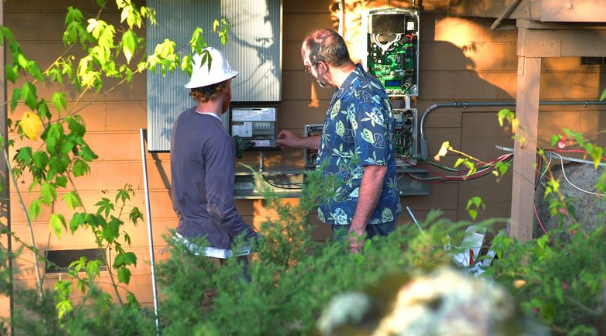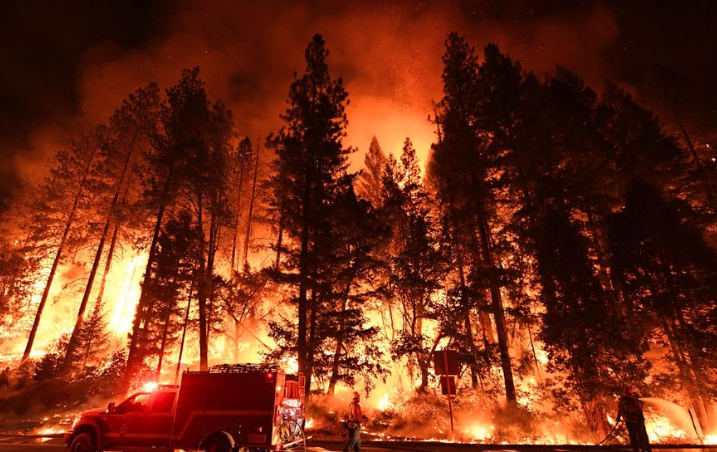
MILLIONS OF CALIFORNIANS WILL 'PLUNGE INTO DARKNESS: AS PG&E COMMITS TO CUT POWER DURING WILDFIRE SEASON
Tyler Durdan
As a result of a new plan to cut power on high wind days during wildfire season, millions of Californians could wind up unprepared and in darkness, according to Bloomberg.
Now bankrupt PG&E proposed the precautionary plan after a transmission line that snapped in windy weather likely started last year‘s Camp Fire - the deadliest wildfire in state history. The plan addresses the problem of wildfires, but creates another one in the process: blindsiding Californians with days of blackouts.
This has caused some California residents to turn to home battery systems and alternative means of power in their homes. However, the number of these systems in use is relatively small when compared to the 5.4 million customers PG&E currently services. Governor Gavin Newsom has said that he’s budgeting $75 million to help communities deal with the threat.
Newsom said:
"I’m worried. We’re all worried about it for the elderly. We’re worried about it because we could see people’s power shut off not for a day or two but potentially a week."
6 of the 10 most destructive wildfires in California history have been over the last year and a half. Combined, they have killed 123 people and have shut down large sections of California’s electrical grid.
The wildfire season starts around June and runs through December, helped along by strong winds and dry conditions that quickly turn brush and plants into tinder.
PG&E has already warned the city of Calistoga that it could cut service as many as 15 times during the upcoming wildfire season. The company's vice president of electric operations, Aaron Johnson, said this number will depend on how extreme the weather is. PG&E has also set up dozens of "resiliency centers", where back up generators can be brought to run essential services. An initial pilot center is being built near Calistoga.
PG&E is also looking at developing a small network of micro-grids consisting of solar panels and batteries which would allow a community to function after PG&E pulls the plug.
Chris Canning, mayor of Calistoga, started exploring the option after PG&E cut power two days last fall, unexpectedly plunging his town into darkness. The outage meant that assisted-living facilities were crippled, street lights and gas pumps didn’t work, and citizens were forced into darkness, as hardly anyone in the town had a back up generator.
"If this is the new normal, we have to accommodate for it,” Canning commented.
The Camp Fire exposed PG&E to an estimated $30 billion in liabilities, catalyzing its January bankruptcy. Since then, the company has been under pressure to prevent the same type of fire from breaking out in the future. Earlier this year, the company said it would widen the scope of its power shut offs to include high transmission powerlines: it's a safer plan, but it would impact about 10 times as many customers compared to its earlier plan.
California’s other utilities also have shut off programs, but they are all smaller scale than PG&E’s.
Johnson of PG&E said: "It’s a very challenging program and not a decision that we take lightly given the safety risks that exist on either side. It’s also part of a larger utility program designed to reduce the likelihood of wildfires including stepped up tree trimming, inspections, grid repairs and hardening."
PG&E has been holding meetings and exercises with local and state officials to prepare. The utility is aiming to give two days warning about any shutoff and has embarked on a public awareness campaign that includes mailing letters to customers to forewarn them before wildfire season starts. State regulators are developing shut off notification guidelines for all of the state's utilities, requiring them to coordinate with state and local agencies. The state wants PG&E to use a shutoff as a last resort.
At the same time, the news of the shutoffs is drumming up interest in solar and battery power.
Sunrun Chief Executive Officer Lynn Jurich said: ‘‘Wildfire outages are going to continue to happen. It’s not just a this-year thing.”
Melvin Hoagland, for instance, lost power for seven days at his home on the edge of Sonoma in 2017. All of his food rotted, causing a terrible smell that lasted for months, and prompting him to install a 9 kW system comprised of 27 solar panels and a battery for his 2100 square-foot home. His system is designed to power for rooms for about 8 to 12 hours during an outage.
Less than 400 homeowners had a home battery system in 2016, according to Bloomberg. Almost 10,000 units were in place last year at an average cost of about $16,400, including incentives.
Hoagland concluded: “We were interested in becoming more independent. It’s a very insecure feeling when they’re going to cut power off.”
https://www.zerohedge.com/news/2019-05-13/millions-californians-will-plunge-darkness-pge-commits-cut-power-during-wildfire



